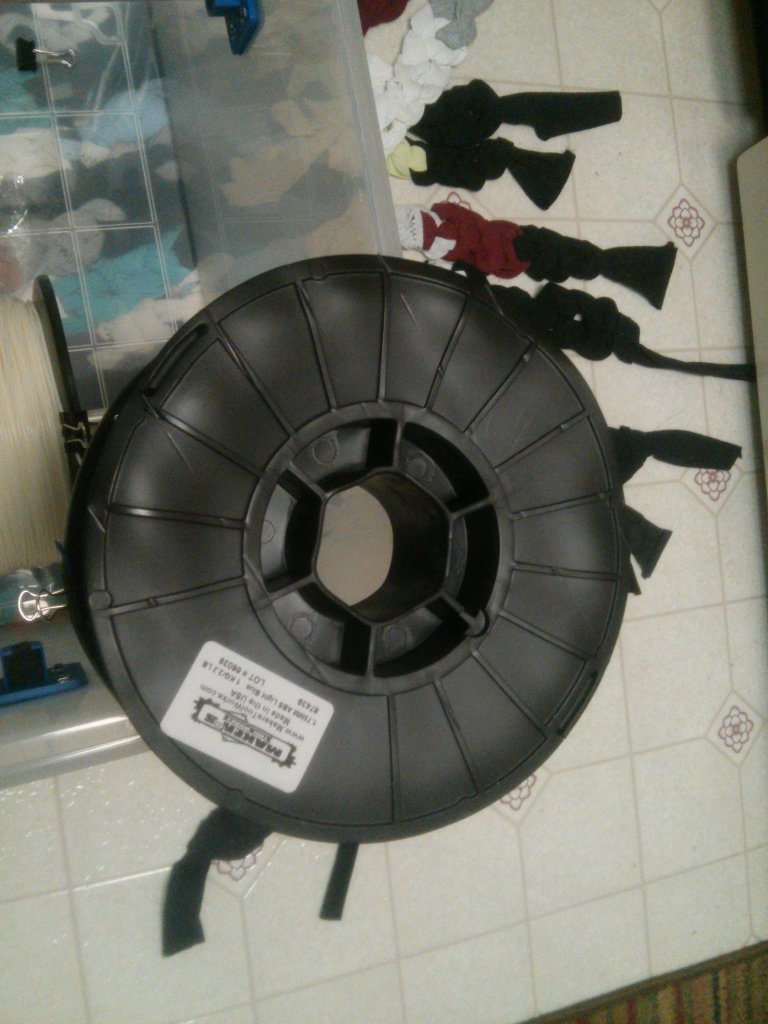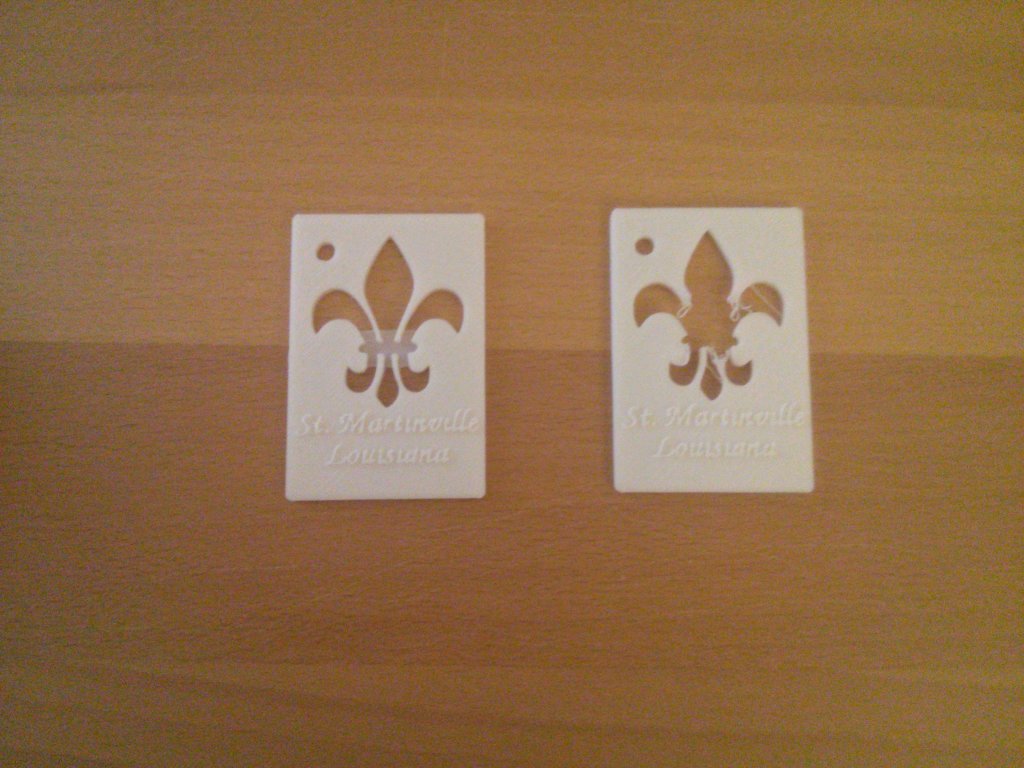The bin I designed to keep my filament dry worked fine until mid-summer when I switched filaments (which involves taking the lid off the bin) multiple times on a humid/rainy day when I had the windows open. I’m guessing that overwhelmed the silica gel cannister, and ever since that day I’ve had trouble printing with ABS.
I knew nylon was sensitive to moisture, especially after the first time I left the nylon hooked to the printer for a while and got steam out of the nozzle for the first layer or two of the print when I used it next. I didn’t realize ABS would have similar issues until today when I once again tried to print ABS and had issues. When I paused the print it kept oozing filament (similar to but not nearly as extreme as nylon did) and when I listened closely I could hear the faint sizzling of water vaporizing. I looked it up and sure enough, ABS, nylon, and even PLA are listed as having issues with moisture, and it was a relatively wet summer here (bigger issue is that I just opened the windows for the breeze rather than turn on the AC).
A quick Google search revealed that one way to dry filament is to stick it in the oven for a while hot enough to vaporize water. Google also told me that ABS softens at around 100 C and PLA softens at more like 60 C, so I’m not drying my PLA and 100 C is about the hottest I should put ABS in for. That all sounded great so I stuck my two spools of ABS (and the nylon) in the oven to dry, along with the silica gel canister to reset it’s moisture absorbing capabilities.
Issue: the spools are black, so they absorb heat quickly, and they couldn’t take the heat:

Fifteen minutes later when I checked on it none of the filament had softened (I’ve heard tales of people fusing an entire spool of filament together, which makes it unusable for printing), but all three spools had softened and the largest was melted to the oven rack. I dropped the temperature a bit but left it all to heat for another hour or two.
After all that, there was no difference whatsoever in terms of bed adhesion. I spent the better part of the afternoon working on it and I’m not entirely sure what made the difference: the last round of changes included changing my z-offset, windexing the glass build plate (having previously just been scraping it clean with a glass scraper), and mixing up and applied cold a new batch of abs juice using fresh filament instead of failed print bits.
Finally, after several months of not getting good results from ABS:

The first try (right) I should have stopped when it became clear that the first layer adhesion wasn’t good enough, but I was so happy to get even that much that I let it go so I could see how the letters came out. The second one included a slightly modified design: there’s a one layer thick block to anchor all the parts that tried to curl.